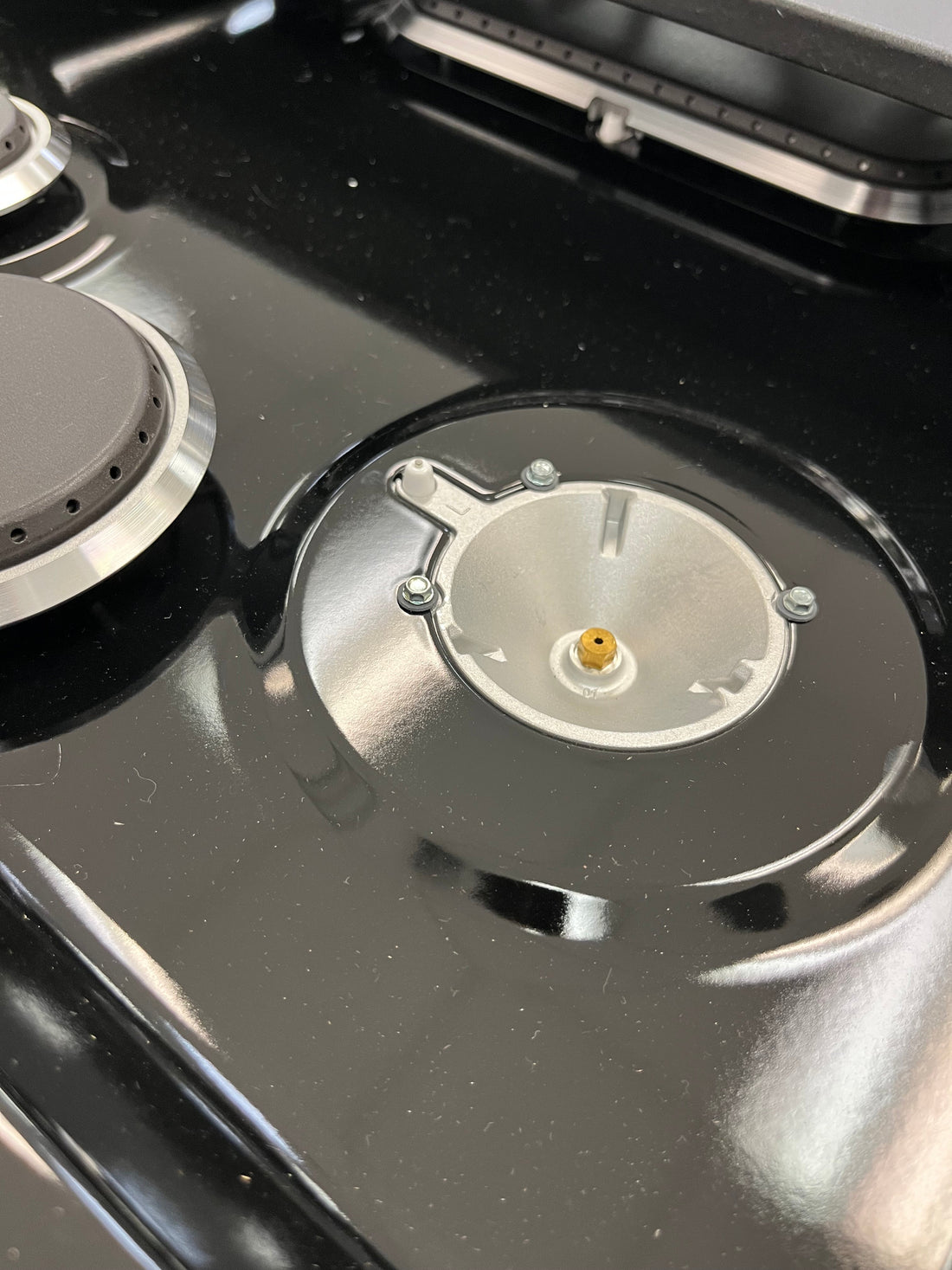
How to Fix a Gas Stove That Won’t Ignite: Igniter and Spark Module Tips
Share
A gas stove that won’t ignite can be frustrating, but in many cases, the problem can be traced back to two key components: the igniter or the spark module. Both are responsible for creating the spark needed to ignite the gas, and if either fails, your stove won’t light. In this guide, we’ll walk you through the common causes of ignition failure and provide step-by-step instructions on how to troubleshoot and fix your gas stove.
1. Check the Gas Supply
Before diving into the internal components, it’s important to rule out a simple issue:
-
Ensure the Gas Is On: Make sure that your gas supply is turned on. Check the gas valve connected to your stove and confirm that it’s fully open.
-
Look for Gas Leaks: If you suspect a gas leak, do not attempt to ignite the stove. Instead, contact a professional for assistance.
-
Test the Gas Flow: If you have a gas oven or other appliances connected to the same line, check if they are receiving gas. If they’re not, the issue may be with your gas supply rather than the stove itself.
2. Inspect the Igniter
The igniter is responsible for producing the spark that ignites the gas when you turn the burner on. If the igniter is faulty, the stove won’t produce a spark, and the gas won’t ignite.
What to Check:
-
Cracked or Dirty Igniter: Over time, igniters can crack or accumulate dirt and grease, preventing them from sparking effectively.
-
Visible Damage: Inspect the igniter for visible signs of damage, such as cracks, chips, or discoloration.
How to Fix or Replace the Igniter:
-
Turn off the Gas and Unplug the Stove: Always disconnect the appliance from the power source before working on it.
-
Remove the Burner Grates and Burner Caps: Lift off the grates and caps to expose the burners and the igniters.
-
Clean the Igniter: If the igniter appears dirty, use a soft cloth or brush to clean off any grease, debris, or food buildup. Be gentle to avoid damaging the part.
-
Inspect the Wiring: Check the wiring connected to the igniter. If any wires appear loose or damaged, they should be reconnected or replaced.
-
Replace the Igniter: If the igniter is cracked, chipped, or simply not working after cleaning, it will need to be replaced. You can find a compatible igniter for your stove model and install it following the manufacturer’s instructions.
3. Test the Spark Module
The spark module is responsible for sending electrical current to the igniters to generate sparks. If the spark module malfunctions, your igniters won’t work, and the burners won’t light.
What to Check:
-
No Spark at All: If none of your burners are sparking, the spark module could be faulty.
-
Visible Damage or Burn Marks: Inspect the spark module for signs of electrical damage, such as burn marks or melted areas.
How to Fix or Replace the Spark Module:
-
Turn off the Gas and Unplug the Stove: Safety first! Disconnect the stove from the power supply.
-
Locate the Spark Module: The spark module is typically located under the stovetop or behind the control panel. You may need to remove screws or panels to access it.
-
Inspect the Spark Module: Check for any visible signs of damage or wear. If there are burn marks or signs of overheating, the module will need to be replaced.
-
Test the Spark Module: If you have a multimeter, you can test the module to check for continuity. If the module does not show continuity, it is defective and needs replacing.
-
Replace the Spark Module: If the module is faulty, order a replacement part. Install the new spark module by following the instructions provided with the part, making sure to connect the wires properly.
4. Check the Burner Cap and Base
Sometimes, the issue can be related to a dirty or misaligned burner cap, which can prevent proper ignition.
What to Check:
-
Burner Cap Position: Ensure that the burner cap is seated properly and aligned correctly. If it’s slightly misaligned, it may prevent the igniter from working.
-
Burner Base: Check for any blockages or food debris around the burner base, as this can also prevent the igniter from sparking effectively.
How to Fix It:
-
Clean the Burner Components: Use a soft brush or cloth to clean around the burner cap and base. Make sure no food or debris is blocking the flow of gas.
-
Realign the Burner Cap: Make sure the burner cap is sitting flat and aligned properly with the base.
5. Test the Stove After Fixing
Once you’ve inspected and replaced the igniter, spark module, and cleaned the burners, it’s time to test your stove:
-
Reassemble the Stove: Replace the burner grates and caps.
-
Reconnect the Power: Plug the stove back into the outlet and turn the gas back on.
-
Test Each Burner: Turn on each burner to see if it ignites properly. If the igniter produces a spark and the gas lights, the issue has been resolved.
Conclusion
A gas stove that won’t ignite is often caused by a faulty igniter or spark module. By following the steps outlined above, you can troubleshoot and fix common issues related to these components. Cleaning or replacing the igniter or spark module can restore your stove’s functionality and get you cooking again in no time.
For genuine replacement parts and expert assistance, visit PRS Parts Inc. at 540 Lagoon Dr. We offer a wide range of appliance parts, including igniters and spark modules, and our team can guide you through the repair process.
